How to Start Cycling Training as a Beginner
Are you ready to join the ranks of the ever-evolving cycling community and transform your casual bike rides into goal-driven, exhilarating journeys? Welcome to the land of cycling training, where the spirit of camaraderie and the thrill of achievement are waiting for you! No matter your background or experience, our mission is to help you embrace your inner athlete and embark on this exciting adventure with confidence. Just check how cycling helps with body transformation!
You don’t need to be a lycra-clad road warrior to enjoy the countless benefits of cycling. From improved fitness and mental health to increased flexibility and strength, cycling is an all-in-one workout that’s accessible to everyone. As you progress in your journey, you’ll discover how training can prepare you for longer rides and push your limits, all while having a blast.
Worried about getting started? Fear not! Our beginner-friendly training guide is designed to break down the process into manageable steps, ensuring you’ll have the knowledge and confidence to tackle the miles ahead. With essential tips on gear, technique, and mindset, we’ve got you covered.
So, if you’re eager to dive into the world of cycling training and reap the rewards of this fantastic sport, keep reading. Your journey to becoming a stronger, healthier, and happier cyclist starts here!
What do you need for Cycling training As a Beginner?

Cycling is a great way to improve your fitness level and enjoy the outdoors. As a beginner, it can be challenging to know where to start with your cycling training. Here are some things you will need to get started with cycling training as a beginner.
- Bicycle:
The first and most important thing you will need for cycling training is a bicycle. It is important to choose a bicycle that is the right size and style for your needs.
If you are looking to buy a bike but don’t know where to start, there are several types of bikes to choose from, each with their own unique features and benefits. Let’s take a closer look at some of the most popular types of bikes and what they’re best suited for.
Road bikes are perfect for those who plan on cycling exclusively on roads. These bikes are lightweight, have slick tires, and little suspension. You’ll be amazed at how fast you can go on a road bike and how easily you can pick up pace.
Mountain bikes are designed for off-road use and come equipped with plenty of suspension, thick tires with excellent grip, and are generally heavier than road bikes. They are ideal for rough terrain and can handle even the toughest trails. If you’re interested in off-road cycling, a hardtail mountain bike is a great choice for most commutes.
Hybrid bikes are a combination of road and mountain bikes, offering the best of both worlds. They are comfortable and nippy, making them perfect for trying out different cycling routes. If you’re a beginner, a hybrid bike is a great starting point.
If you’re looking for a bike that’s well-suited to urban areas, a cruiser or town bike might be the right choice for you. They’re designed for road use, but they’re not as fast as road bikes. If you’re looking to save money on transport or get more exercise, a cruiser is a great option, especially if you live in a flat area.
Touring bikes are for those who want to take long journeys. They’re similar to road bikes but are designed to be more robust and can carry heavier loads.
Folding bicycles are great for city living, as they can easily be taken on and off public transport. They’re ideal for those with multiple legs in their commute.
Finally, there are e-bikes! These bikes are gaining popularity in Europe, and for good reason. They come equipped with a small battery and an electric motor, which gives the rider an extra boost when needed. This means that hills are no problem, and arriving at work sweat-free is a breeze.
No matter which type of bike you choose, make sure you take the time to find the right fit for your body and your needs. Happy cycling!
- Helmet:
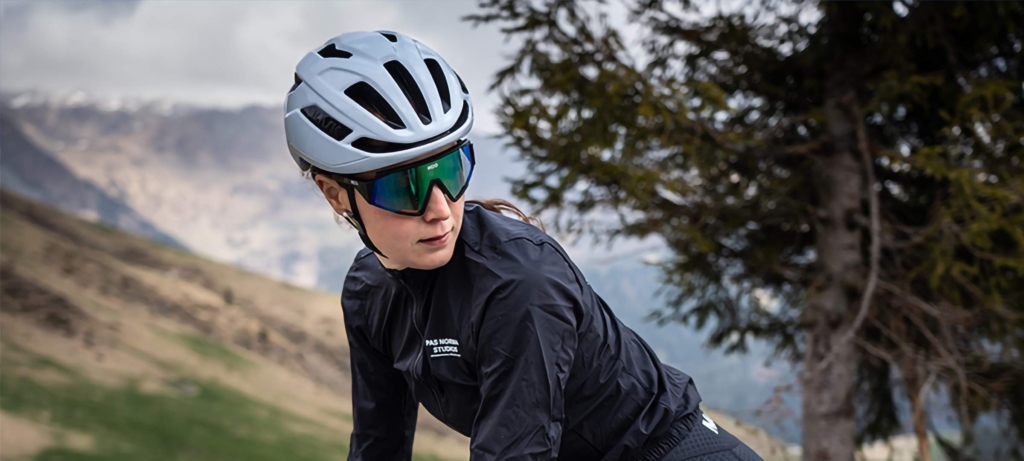
A helmet is essential for cycling safety, and choosing the right one is important. Look for a helmet that meets safety standards such as the CPSC certification. Make sure the helmet fits snugly and comfortably on your head, with no movement or slippage. Look for helmets with plenty of ventilation to keep your head cool, and consider one with a visor to protect your eyes from the sun. Also, consider the shape of the helmet, as some helmets are better suited for certain head shapes.
- Cycling Clothing:
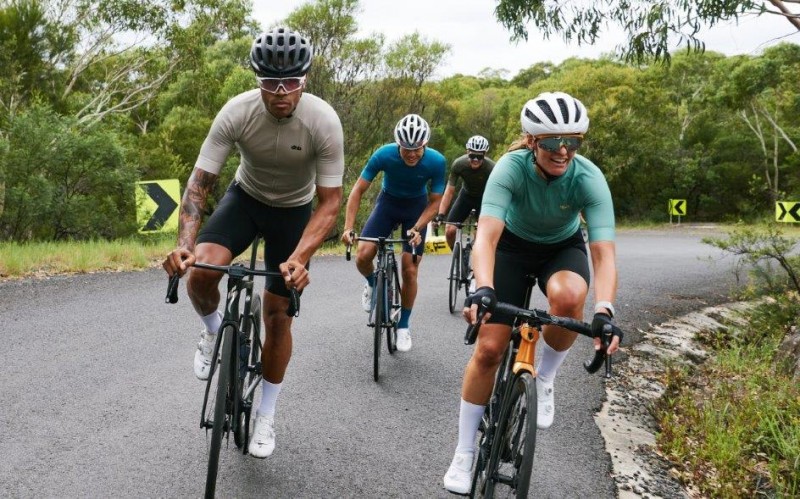
While it is not necessary to have specific cycling clothing, it can make your training more comfortable. Cycling shorts with a chamois pad can reduce chafing and provide extra cushioning for your bottom. Cycling jerseys are designed to wick away sweat and provide ventilation, keeping you cool and comfortable during long rides.
- Shoes and Pedals
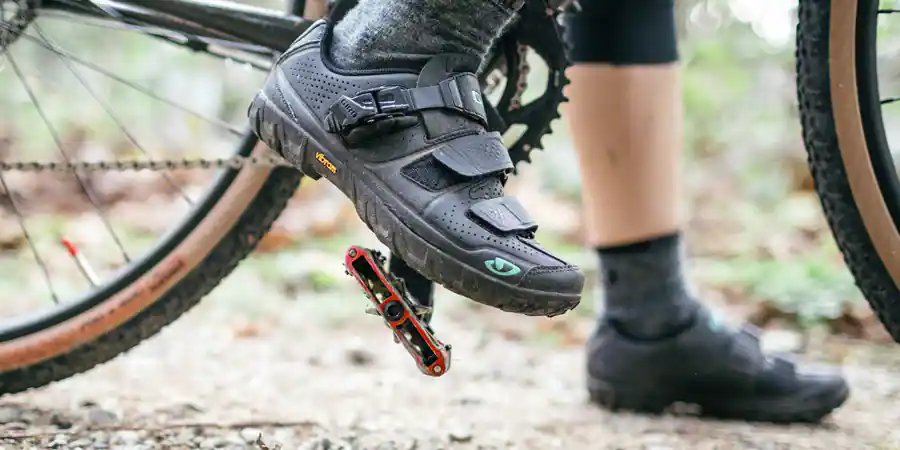
Cycling shoes are designed to improve your performance and comfort on the bike. Look for shoes that are compatible with your pedals, whether they are flat or clipless. Consider shoes with stiff soles to improve power transfer and reduce foot fatigue. Look for shoes with ventilation to keep your feet cool and dry, and consider shoes with a secure closure system to ensure a snug fit.
Pedals are an important component of your bike, and choosing the right ones can make a big difference in your cycling experience. Flat pedals are a good option for beginners or those who prefer to wear regular shoes. Clipless pedals offer a more secure connection between your foot and the pedal, improving your power transfer and control. Look for pedals that are compatible with your shoes and offer a good balance between weight, durability, and cost. Consider getting pedals with adjustable tension to customize your riding experience.
- Water Bottles
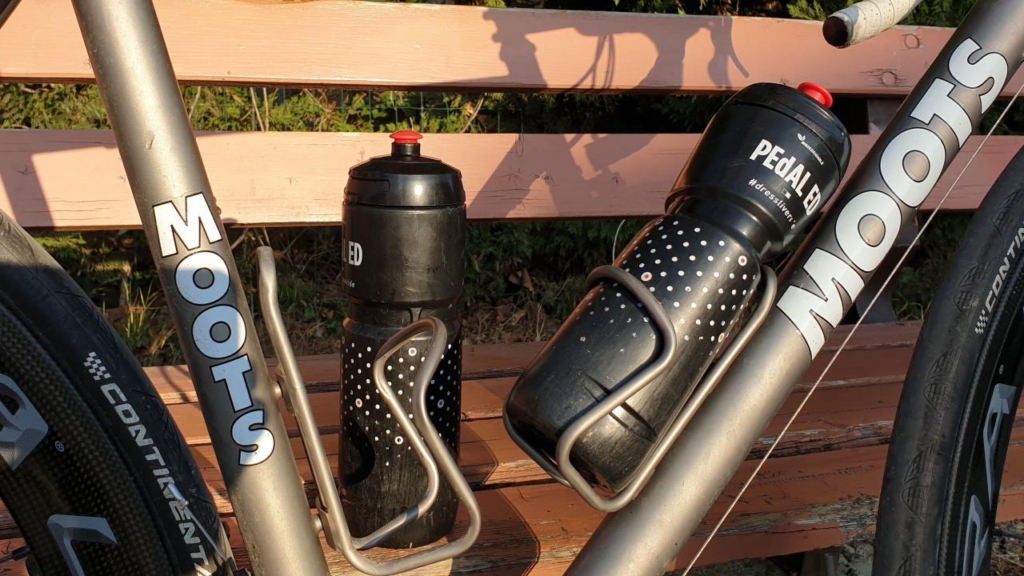
Staying hydrated during a ride is crucial for your health and performance. A water bottle or hydration pack is a must-have accessory for cyclists. Look for a water bottle that fits comfortably in your bottle cage and is easy to drink from while riding. Consider a bottle with a valve or nozzle to prevent leaks and spills. If you plan on riding longer distances, consider a hydration pack that allows you to carry more water.
Beginner Cycling Training Schedule
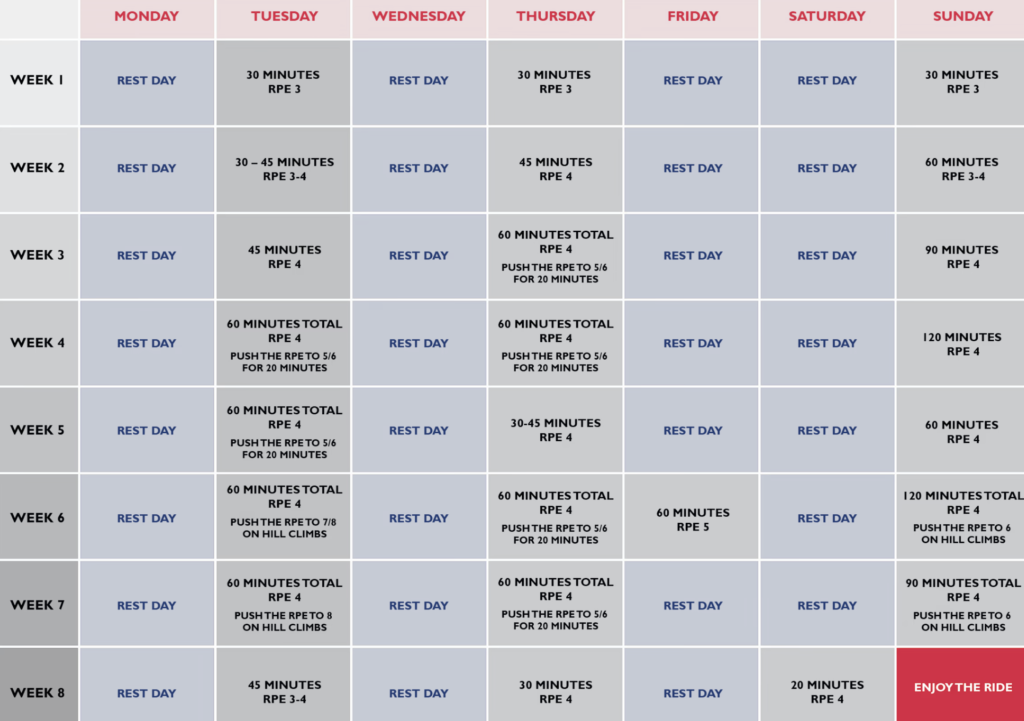
Are you a beginner looking to get into cycling but not sure where to start? Don’t worry, we’ve got you covered with an 8-week cycling training schedule that will take you from novice to intermediate and culminate in a 10-mile ride.
The key to successful cycling training is to ease yourself in gradually. You’ll cycle three days a week, with every Saturday or Sunday being the longest ride. Before you start, choose which days are best for you to cycle and alternate them. We recommend Tuesdays, Thursdays, and Sundays.
The first two weeks are all about getting comfortable with cycling, so start with a couple of 10-minute cycles on the first two outings, finishing with a 20-minute cycle on the weekend. Then repeat Week 1.
As you progress, you’ll gradually increase the duration and intensity of your rides. By Week 4, you’ll be cycling for 30 minutes on your first two days and 45 minutes on the weekend. Repeat this schedule in Week 5.
In Week 6, you’ll cycle for 30 minutes on your first day, 20 minutes on your second day, and 60 minutes on the weekend. For the final week, you’ll add an extra day of cycling and finish with a 10-mile ride.
Remember, this plan is designed for beginners, so feel free to adjust the times to suit your needs. And don’t forget to choose a route that’s suitable for your skill level. For beginners, we recommend sticking to relatively flat terrain.
By following this training schedule, you’ll improve your fitness and cycling skills, and be able to comfortably complete a 10-mile ride in just eight weeks. So, what are you waiting for? Get on your bike and start pedaling!
Cycling Workout Tips for Beginners
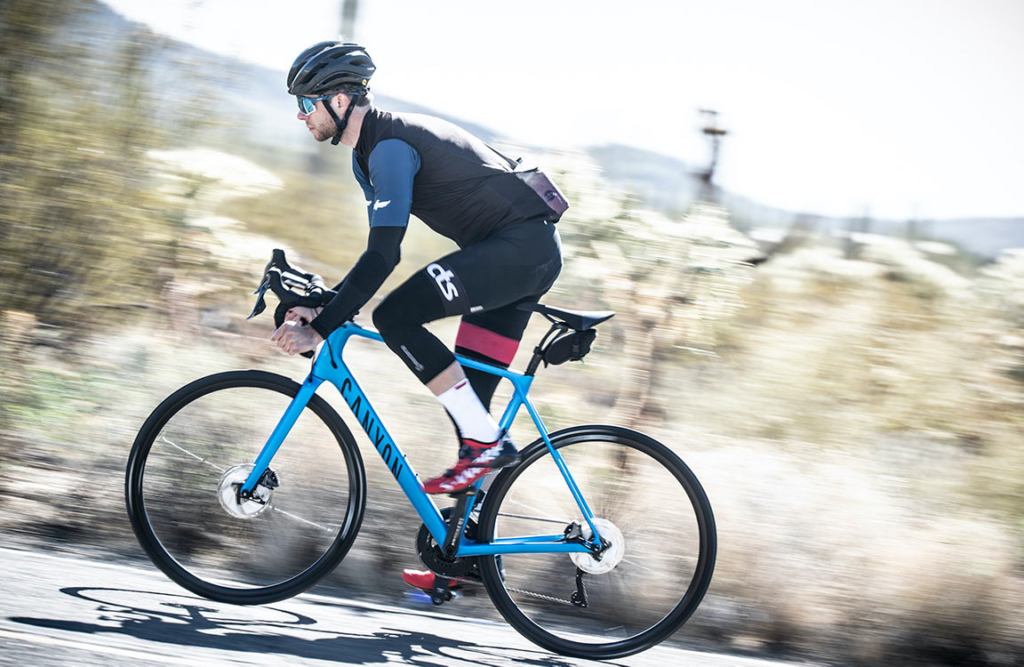
If you’re a beginner looking to get into cycling, there are a few things you should keep in mind to ensure a safe and enjoyable experience. Here are some top tips to get you started:
Keep your tires pumped up: Properly inflated tires will make cycling easier and reduce the risk of punctures. Make sure to check your tire pressure regularly and inflate them to the recommended level.
Carry a puncture repair kit: Even with properly inflated tires, punctures can still happen. Invest in a repair kit that includes an inner tube, Allen key, tire levers, and pump, and carry it with you on every ride.
Protect your eyes: Bugs, rain, stones, and glare can all pose a risk to your eyes while cycling. Invest in a pair of cycling-specific eyewear to protect your eyes and ensure clear vision while riding.
Use mudguards: Especially if you’re cycling to work or on wet roads, mudguards can help keep you and your bike clean and dry.
Fuel and hydrate properly: For long rides, make sure to bring snacks and drinks to keep yourself fueled and hydrated. Energy bars, bananas, and sweets are all great sources of energy for cycling.
Once you’ve got these basics covered, it’s time to start incorporating some cycling workouts into your training. One of the best beginner interval workouts to start with is called Tempo. This involves riding at a moderately challenging intensity that is harder than your cruising endurance pace but still allows you to speak in short sentences. Aim to accumulate time at this intensity, starting with a minimum of 15 minutes and building up to 60 minutes.
Another important interval workout to incorporate is SteadyState, which targets your maximum sustainable power output or power at the lactate threshold. Without a power meter or heart rate monitor, you can tell you’re at the appropriate intensity if your breathing is deep but not out of control, and you can only speak in short phrases. A typical lactate threshold workout might include three 10-minute SteadyState intervals separated by 5 minutes of easy spinning recovery.
By following these tips and incorporating interval workouts into your training, you’ll be well on your way to becoming a stronger, more confident cyclist.
Cycling Training Nutrition Snacks

Cycling training nutrition snacks are an essential component to ensure that cyclists have enough energy to meet the demands of their workouts. It is crucial to strike a balance between caloric intake and expenditure, especially as you increase your weekly caloric expenditure. Many people make the mistake of increasing caloric intake way more than necessary as they start training, but it is important to remember that moderation is key.
Hydration is the top priority for cyclists. Staying hydrated helps regulate core temperature, maintain blood volume, and aids in digestion. It is important to ensure that you are hydrated before, during, and after your ride. Your hydration status determines whether your nutrition strategy has a chance of being effective.
For training sessions that are 60 minutes or shorter, no additional calories are needed. Your body has enough stored carbohydrate energy to fuel a 60-90 minute workout. However, for workouts longer than 90 minutes, it is recommended to consume carbohydrates to fuel your body. Performance diminishes as carbohydrate stores run out, as it is the body’s preferred fuel for higher-intensity efforts. Aim to consume about 20-30% of your hourly caloric expenditure, mostly from carbohydrates, for improved performance during longer rides.
It is recommended to keep hydration and calories separate. Sports drinks are great, but when you separate fluids from calories, you can increase fluid intake in response to high temperatures or increased exertion without overloading your stomach with more calories than it can process. Keep hydration in your bottles and calories in your jersey pockets to maintain optimal fluid and calorie balance.
Off the bike, it is important to maintain a generally healthy diet rich in fruits and vegetables, lean proteins, and natural fats. Cycling training does not dramatically increase protein requirements, so most cyclists should be able to meet their nutritional needs through meals and snacks rather than supplementation. It is crucial to get enough energy, as significant caloric restriction can prevent your body from creating positive adaptations that enhance your fitness and performance.
Hydration is the key component of cycling training nutrition. For longer rides, it is important to consume carbohydrates to fuel your body, but moderation is still important. Keeping hydration and calories separate is also recommended to maintain optimal fluid and calorie balance. A generally healthy diet rich in fruits and vegetables, lean proteins, and natural fats should be sufficient to meet your nutritional needs.
Cycling Myths to Understand
Cycling is a popular sport and mode of transportation for people all around the world. However, there are many myths and misconceptions surrounding this activity that can be misleading or even harmful to those who believe them. It is important for cyclists to be aware of these myths and understand the truth behind them. Here are some common cycling myths that need to be understood:
Cycling is only for the young and fit. This is a common misconception that can discourage people from trying cycling. In reality, cycling can be enjoyed by people of all ages and fitness levels. There are many different types of bikes and cycling activities that cater to different abilities and interests.
Cycling is dangerous. While cycling does come with some inherent risks, such as the potential for accidents and injuries, it is generally a safe activity when proper safety measures are taken. Wearing a helmet, following traffic laws, and using proper lighting and reflective gear can greatly reduce the risk of accidents.
You need expensive gear to be a cyclist. While high-quality gear can certainly enhance the cycling experience, it is not necessary to spend a lot of money to get started. A basic bike and safety gear are all that is needed to enjoy cycling.
Cycling is only for commuting or exercise. While cycling is a great way to commute and stay in shape, it is also a fun and enjoyable activity that can be done for leisure and relaxation. Many cyclists enjoy exploring new places and taking in scenic views on their bikes.
Cycling is not a serious sport. Cycling is actually a highly competitive and demanding sport that requires a lot of skill, training, and dedication. Professional cyclists are among some of the most physically fit athletes in the world.
By understanding and debunking these common cycling myths, cyclists can better enjoy their riding experience and encourage others to try cycling as well.
Before You Start to Ride
If you’re considering taking up cycling, you’re in for a fun and healthy ride! However, before you hop on your bike and hit the road, there are a few things you need to know to ensure a safe and enjoyable experience. Here are some key tips to keep in mind:
Safety first: The most important thing you need to know before you start riding is safety. Always wear a helmet, follow traffic laws, and make sure your bike is in good working condition. This means checking the brakes, tires, and chain regularly, and making any necessary repairs before you hit the road.
Proper fit: A properly fitted bike is essential for comfort and safety. Make sure your bike is the right size for your height and weight, and that the seat and handlebars are adjusted to the right height and angle for your body.
Start slow: It’s easy to get excited and want to ride for hours on your first day, but it’s important to start slow and build up your endurance over time. Begin with short rides on flat terrain and gradually increase your distance and difficulty as your fitness improves.
Dress for success: Comfortable clothing and appropriate footwear are key for a comfortable and safe ride. Wear moisture-wicking clothing that fits well and allows for easy movement, and choose shoes with a stiff sole that provide support and help transfer power to the pedals.
Know your route: Familiarize yourself with your route before you start riding, and choose roads and trails that are appropriate for your skill level. Avoid busy roads and intersections if possible, and always follow traffic laws and signals.
By keeping these tips in mind, you can ensure a safe and enjoyable cycling experience that will leave you feeling happy and energized. So grab your bike, put on your helmet, and hit the road – the adventure awaits!
Riding Skills and Technique
Riding a bike can be a great way to get outdoors, enjoy the scenery, and stay active. However, riding safely and efficiently requires more than just hopping on and pedaling away. Developing good riding skills and technique is essential for a fun and rewarding cycling experience. Here are some key tips to help you ride like a pro:
Balance and Control: Balance is one of the most important skills for cycling. Start by practicing balance drills and gradually work up to more advanced techniques like track stands and hopping. Also, practice controlling your speed with the brakes, and learn how to shift gears smoothly and efficiently.
Body Positioning: Proper body positioning can make a big difference in your cycling experience. Keep your elbows bent and your knees slightly bent for better shock absorption. Lean forward slightly to engage your core muscles and reduce wind resistance.
Cornering: Mastering the art of cornering is key to safe and efficient cycling. Use the appropriate technique for the type of corner you’re approaching, whether it’s a wide turn or a sharp curve. Keep your outside pedal down, and look through the corner to anticipate any hazards or obstacles.
Climbing: Cycling uphill can be challenging, but with the right technique, you can conquer any climb. Shift to a lower gear, and maintain a steady pedaling rhythm. Keep your upper body relaxed, and avoid leaning too far forward.
Descending: Riding downhill can be exhilarating, but it also requires caution and control. Always keep both hands on the handlebars, and use both brakes to control your speed. Look ahead for any hazards or obstacles, and be prepared to make adjustments.
Remember, developing good riding skills and technique takes practice and patience. Start with the basics and gradually work your way up to more advanced techniques. With time and practice, you’ll be riding like a pro in no time.
In conclusion
starting a cycling training program as a beginner can be an intimidating process, but it doesn’t have to be. With the right equipment, a solid plan, and a willingness to learn, anyone can take their first steps towards becoming a successful cyclist. Remember to start slow and build gradually, listen to your body, and never be afraid to ask for help or guidance from more experienced riders. Whether your goal is to improve your health, lose weight, or compete in races, cycling is a rewarding and fulfilling activity that can bring a lifetime of joy and accomplishment. So, get on your bike, feel the wind in your hair, and start pedaling towards a healthier, happier you.
